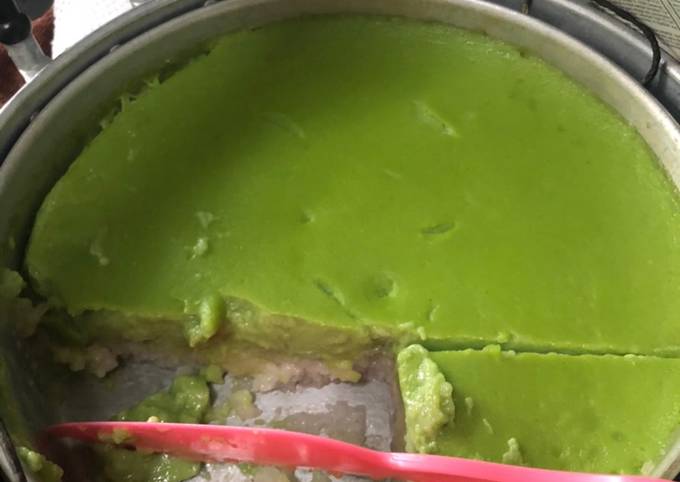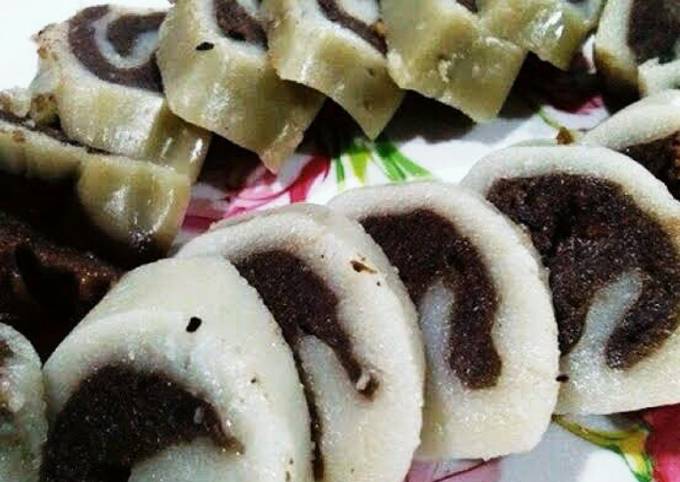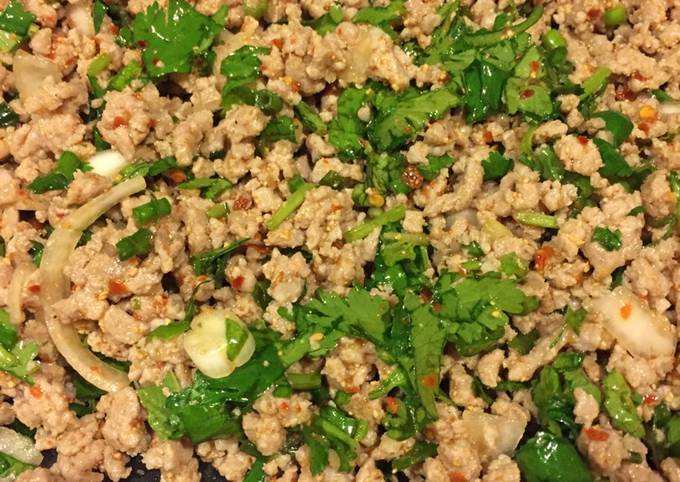
Hey everyone, hope you’re having an amazing day today. Today, I’m gonna show you how to make a distinctive dish, seri muka (malay ethnic cuisine). One of my favorites. For mine, I will make it a little bit tasty. This is gonna smell and look delicious.
Seri Muka (Malay Ethnic Cuisine) is one of the most popular of current trending foods on earth. It is simple, it’s quick, it tastes yummy. It’s appreciated by millions daily. They’re fine and they look fantastic. Seri Muka (Malay Ethnic Cuisine) is something which I’ve loved my whole life.
Seri Muka is a Malay and Nyonya kuih made of glutinous rice and pandan leaves. They are so pretty, with natural green color and cut into small pieces. More importantly, seri muka is absolutely delightful—sweet, laden with coconut milk, with a nice sticky texture. They go extremely well with a cup of coffee in the morning, or as an afternoon. (Seri muka, Kuih salat, Sri muka, Kuih seri muka, Kueh salat, Kueh sarlat, Putri salat) Serimuka is a kuih variety that consists of two separate layers.
To begin with this particular recipe, we must first prepare a few components. You can have seri muka (malay ethnic cuisine) using 11 ingredients and 4 steps. Here is how you can achieve that.
The ingredients needed to make Seri Muka (Malay Ethnic Cuisine):
- Prepare Glutinous Rice
- Make ready 500 g rice soaked overnight
- Make ready 500 ml coconut milk
- Get to taste Salt
- Prepare Pandan Layer
- Take 150 ml Pandan Juice
- Take 150 g sugar
- Take 3 large eggs
- Get 100 g wheat flour
- Prepare 400 ml coconut milk
- Prepare to taste Salt
Seri Muka is like many other desserts from the Nyonya cuisine, which is a unique blend of Malay and Chinese culinary culture. The word "kuih" means sweet dessert in Malay. Seri Muka ( also known as Seri Muka and Kuih Seri Muka) is a traditional Malaysian / Peranakan dessert (kuih in Malay) that consists of two layers - one is savory and. Kue seri muka, sri muka or putri salat (lit. pretty face cake) is a Banjarese and Malay two-layered dessert with steamed glutinous rice forming the bottom half and a green custard layer made with pandan juice (hence the green colour).
Instructions to make Seri Muka (Malay Ethnic Cuisine):
- Drain the rice, place it in a cake baking tray or any mold that has the similar depth. Add one pandan leaf. Mix the coconut milk with salt and add to the rice. The coconut milk should be very slightly above the rice. So watch it when you pour. Place it in the steamer for 25 mins or until it's cooked
- Now once the rice is cooked stir well, remove the pandan leaf and press compactly on the baking mold. This is to ensure when we pour the pandan layer it does not slip through the rice
- For the pandan layer. Add all the ingriedients and pulse in a blender. On top of a steamer, stir the mixture until it becomes thick. Then pour over the hot rice. Steam another 30 minutes.
- Cool it down before you can cut. Consume within 24 hours as it will go bad quickly. You may store in the fridge but the rice will become hard.
Seri Muka ( also known as Seri Muka and Kuih Seri Muka) is a traditional Malaysian / Peranakan dessert (kuih in Malay) that consists of two layers - one is savory and. Kue seri muka, sri muka or putri salat (lit. pretty face cake) is a Banjarese and Malay two-layered dessert with steamed glutinous rice forming the bottom half and a green custard layer made with pandan juice (hence the green colour). Coconut milk is a key ingredient in making this kue. It is used to impart creamy taste when cooking the glutinous rice and making the custard layer. The main characteristic of traditional Malay cuisine is the generous use of spices.
So that is going to wrap this up with this special food seri muka (malay ethnic cuisine) recipe. Thanks so much for your time. I am sure that you will make this at home. There’s gonna be interesting food at home recipes coming up. Remember to bookmark this page on your browser, and share it to your family, colleague and friends. Thanks again for reading. Go on get cooking!

